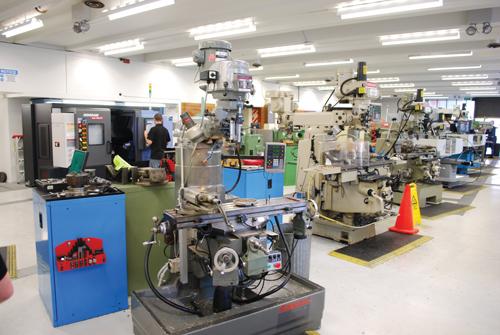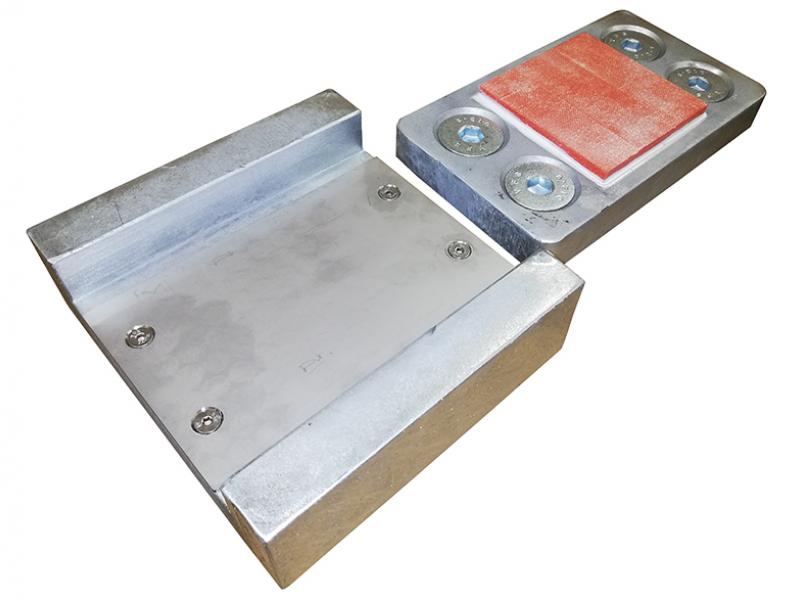At the heart of the University of Auckland’s engineering faculty is a modern workshop, an in-house facility that’s used to fabricate items large and small for staff and students.
Steve Warrington has been working there for 28 years. Having joined as an apprentice, he stayed on and now runs the place as its technical services manager – assisted by 2IC senior technician Trevor Waldmeyer.
Apart from managing a large workload, with requests for custom-designed one-off items, the shop is indistinguishable from most any you might see up and down the country. Except this one, and its staff, are probably protected a bit more from the nation’s economic ups and down. There’s no shortage of work at this shop.
As he gives me the grand tour, I’m introduced to a mixture of old-school machines and some very new equipment – such as a computerised Centroid three-axis CNC mill, and a Fanuc RoboDrill that makes fast work of milling, drilling and tapping in a small enclosure.
Steve’s reluctant to say how much the university paid for the RoboDrill. One wonders if they got a discount in exchange for the manufacturer getting some kudos for having it used in one of the country’s leading institutions.
Off to one side is a room housing a 3D printer, a Pro Jet HD350 from 3D Systems. It was featured on TV3’s 3rd Degree current affairs show in September, using a time-lapse video to show viewers how it made a replacement part for a dishwasher – a guide wheel for a crockery rack.
“It can do exceptionally fine detail printing,” says Steve. “But it is not fast and I can’t see any 3D machines disrupting manufacturing any time soon.
“They are not up to the job of replacing injection moulding machines for mass produced products, and now there are metal injection moulding machines.
“3D printing machines have a long way to go yet. But they certainly have their place in manufacturing, and they are a good tool in machine shops such as ours, because they allow us to make things that can’t be made in conventional machines.”
He cautions anyone buying a 3D machine to do their research before signing the contract.
“Each machine seems to be superseded by a more advanced version every year,” he says. “So you need to do your research before you spend your money and lock yourself into that technology.”
Steve says the two liquids used by the HD350 to print solid objects can cost $1350 for 2ltrs of base and support material.
“It can produce some delicate components though,” he says holding a small plastic filter in his hand.
In a glass case, he points to a plastic pippet stand his team designed and built for the university’s science department.
“The pippet stands offered by suppliers tended to tip over when tall pippets were slotted in them, so we designed one that’s slightly taller, and has a wider base,” he says.
It’s a perfect example of why the workshop is there. If you can’t buy it, and having it produced outside takes too long and costs too much – Steve’s team can, as in the case of the custom pippet stand, knock one out and solve problems in-house quick smart. Although, not perhaps as quick as some might expect.
Steve and his staff mainly work with academic students, who can arrive on the shopfloor with less than perfect drawings for him to work with. Health and safety rules means the machines are only used by Steve’s qualified and trained staff.
“Some students are not able to draw very well using CAD so we look carefully at their plans,” he says. “We work with them on the 3D design because we understand what they want to achieve, and we help get them there.”
The day I was on site Steve’s team had 93 jobs in the queue – about 600 hours’ work. He says careful management is needed to assign each job to the best machine – juggling resources to keep everything moving along. His aim is to not have any machines standing idle. There’s plenty to keep the staff of 11 and one apprentice busy.
The machine shop is run on a commercial basis with every job request being estimated at the going rate. The department has to pay its way, even if it is ‘selling’ its services within the university.
“We cost out the materials and labour, and let people know what the job will cost,” says Steve. “And we provide estimates – not quotes – so we charge jobs correctly. The house always loses when you provide a quote.”
Staff at the shop use electronic job sheets that keep careful track of the time spent on each project.
“We are definitely run like a business,” says Steve.
Like any machine shop, a business case has to be put forward for every piece of equipment it asks for. Over the last four years it has spent $700,000 on new equipment, and Steve has his eye on acquiring a five-axis inset mill.
The machine shop doesn’t have too much to do with businesses outside of the university. But will occasionally call on help for items it is unable to deliver – perhaps due to time constraints. However, Steve says his team is often able to produce what it needs at a far cheaper rate than any suppliers could match.
A case in point is a few hundred custom fasteners it was asked to make. After getting quotes from outside companies, Steve worked out they could produce them for a fraction of the cost they were quoted.
“We just set the machine up and let it run,” he says. “Also, a lot of firms just aren’t interested in quoting us for specialised items and such small runs, and the time it takes in conveying the specs to them, and agreeing on exactly what we need, we may as well just do it ourselves.”
However, firms do contact Steve to ask if the university’s workshop can make products for them. He’s always pleased for the call, but says his team is normally too busy to take on ‘outside’ work. “Our priority is our staff and students,” he says.
Attracting and retaining engineering staff is an ongoing issue. Steve is doing his best to invest in the future though by employing an apprentice.
“You have got to train your own guys,” he says. “We have one apprentice, and that is encouraging – although looking after an apprentice takes time and it is a huge investment in training them up on the technology we have here.
“It is tough getting experienced and qualified staff. But I am sure that is the case with most firms, but we do have some talented people coming through.”
On the web: http://bit.ly/102EYp0






